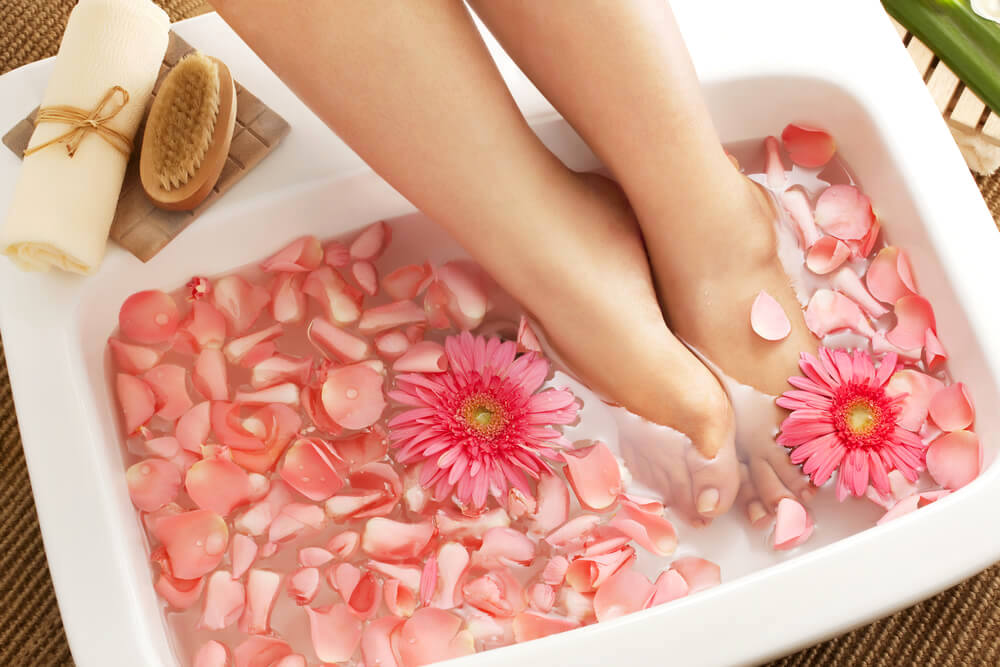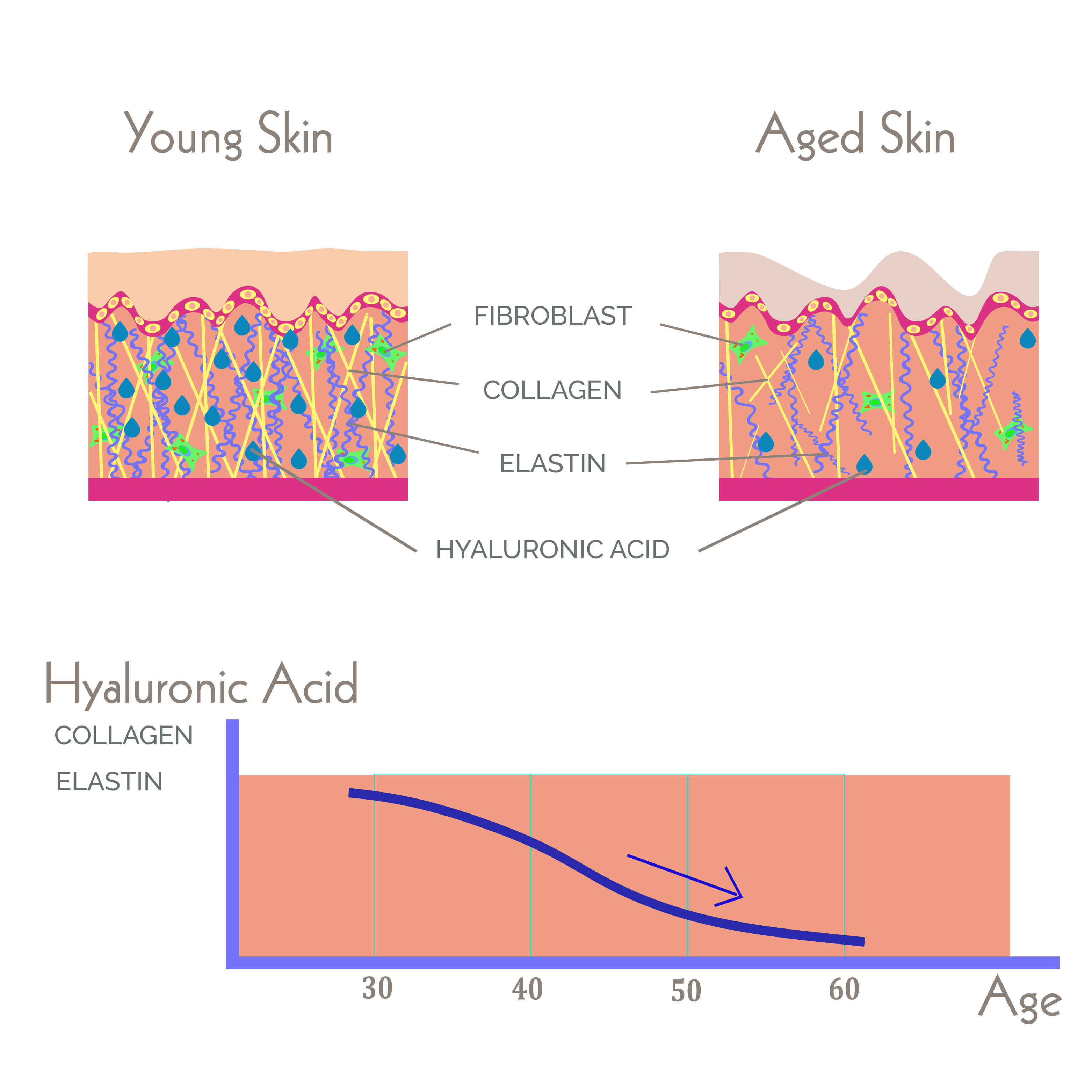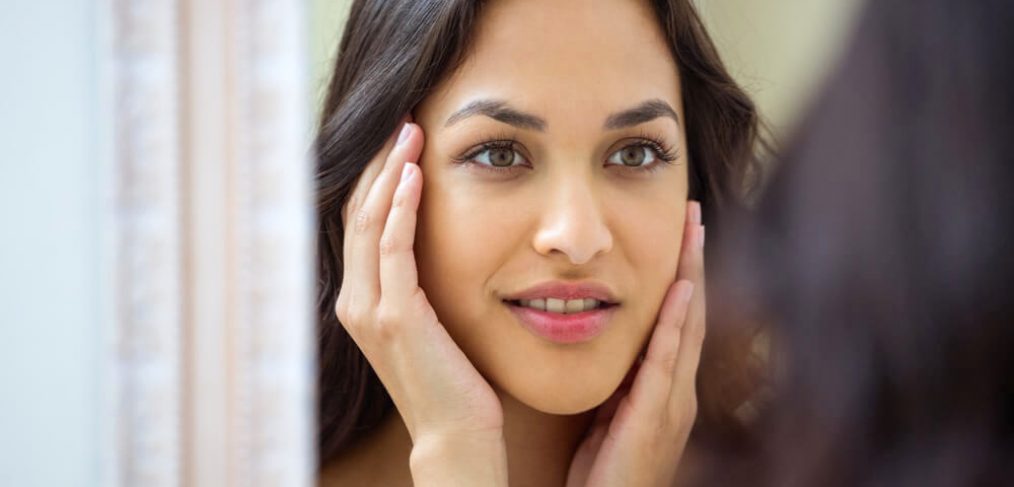Many people think that they either have thin skin or thick skin, but did you know that your skin thickness varies around your body?
Not only that, but skin thickness also changes with age, significantly changing your appearance, making skin thickness a topic well worth knowing a bit more about!
What Exactly is the Difference Between Thin and Thick Skin?
The skin consists of three main layers:
- Epidermis – provides protection against the world around you, preventing everything from bacteria and viruses to pollutants and water from entering your skin. It also helps to keep your skin’s moisture locked inside
- Dermis – contains the hair follicles, sweat glands and connective tissue
- Hypodermis – composed of fat and connective tissue

Within the epidermis, which is the outermost layer of skin, there are more layers to be found…
Thin skin contains four layers here, while thick skin contains five.
As you can imagine, this makes thin skin more vulnerable to damage than thick skin.
So, where on your body can you find thick and thin skin?
The Face
To put it simply, the skin on your face is much thinner than the skin on your body.
But, to make things slightly more complicated, different parts of your face will feature skin with a different thickness.
Let’s start with the skin around the eyes…
The skin here is up to ten times thinner than the skin on the rest of the face, which is why this area is usually the first to show visible signs of aging, such as fine lines and wrinkles.
In addition to being thinner, the skin around the eyes, especially in the outer corners, is noticeably lacking in oil glands.
Why does this matter?
Because oil glands are crucial when it comes to keeping the skin moisturized, preventing wrinkles and fine lines from developing.
So, how can you properly care for the skin around your eyes?
Here are a few tips:
- Make use of antioxidants – make sure that the skin care products you use contain plenty of vitamins A, B, C and E, as well as beta-carotene and other antioxidants
- Keep it moisturized – moisturizer gives your skin an additional layer of thickness and protection, making this especially important for areas of thin skin. Sodium hyaluronate is one of the best ingredients when it comes to hydrating this part of the face
- Sun protection – being so thin, the skin around the eyes is highly susceptible to sun damage, so make sure that you are not only using a sun cream, but also wearing sunglasses and a wide-brimmed hat for added protection
- Avoid squinting – this will only speed up the rate at which your fine lines and wrinkles develop
- Be gentle – the skin around the eyes is delicate, so make sure that you are gentle when doing everything from removing makeup to cleansing. Don’t ever tug or pull at the skin here

Another part of your face where you will find thin skin is…
Your lips!
Yes, your lips consist of the same layers of skin as the rest of your face. The difference lies in the thickness of the epidermis, with the lips featuring an extremely thin epidermis.
Just like with the skin around your eyes, the skin on your lips does not contain any oil glands, with the only source of moisture here being the saliva from your mouth.
It goes without saying that the best way to give your lips some extra nourishment is by providing them with an additional moisture source, such as a hydrating lip balm. Try to find one that contains SPF, as the skin on your lips will experience UV damage just like the skin on the rest of your face and body.
The Neck and Chest
When it comes to the skin on your body, the skin on your neck and chest is the thinnest.
Again, just like the thin areas on the face, the neck and chest do not contain as many oil glands, meaning that both of these areas are highly prone to the visible signs of aging. Added to this is the fact that the neck undergoes so many different movements throughout the day, with all of these repeated motions leading to loose skin and wrinkling.
So, what can you do about this?
It’s actually quite simple…
All you need to do is extend your regular facial skin care routine downwards, so that you are covering your neck and your chest too.
Yes, this means everything from your cleanser to your exfoliant to your serum to your moisturizer, as the skin here needs all of this just as much as your face does.
The Hands
The hands are quite similar to the neck and chest, in that the skin here is quite thin.
This is why many people can instantly tell your real age just by looking at your hands.
Not only that, but the hands tend to be the part of the body that are always exposed to the sun, yet many tend to neglect this area when it comes to applying sunscreen. All of this sun exposure only leads to a breakdown in your skin’s collagen and elastin, making it even thinner than it was.
How can you give the skin on your hands the care that it needs?
Moisturizing is key.
You likely wash your hands more often than you wash any other part of your body, but, each time you do, you are actually drying your hands out.
To counter this, make sure that you apply a layer of moisturizer or hand cream each time you wash your hands. Don’t worry about completely drying them either, because the cream will work so much better on damp skin.
Sun protection is also important. If you tend to forget this, try finding a hand cream that already contains SPF.
The Feet

While the actual soles of your feet may feature skin that is thick, the skin covering the rest of your feet is relatively delicate.
However, not only does it have to deal with its own fragile nature, but it also experiences so much wear and tear from the use of improperly fitting shoes.
In fact, 70% of foot problems are caused by ill-fitting shoes, and this definitely isn’t going to do your skin here any favors.
As you can imagine, the best way to prevent this is by making sure that your shoes fit you properly. Any quality shoe store will be more than happy to help you with this.
A moisturizer or foot cream can also really help to keep the skin here moisturized.
But don’t forget…
Just because the soles of your feet have thick skin, this doesn’t mean that you can completely neglect them.
The skin here contains no oil glands, meaning that it is prone to dryness.
Sun damage can also take a toll here, often without people even realizing.
So, why not give your entire foot some TLC each week?
Give this indulgent foot routine a try:
- A foot soak – either in a small tub or a bath, add in some Epsom salts, colloidal oatmeal, jojoba oil, and a few drops of your favorite essential oils, before soaking your feet for around ten minutes
- Exfoliate – use a pumice stone to gently give your feet a rub
- Moisturize – make sure that you apply a layer of moisturizer while your feet are still slightly damp. To make sure that it doesn’t rub off, try slipping on a pair of thin cotton socks
- Oil – if your feet are especially dry and are cracking, a layer of a moisturizing oil, such as olive, coconut, or safflower, can really help
The Elbows and Knees
The elbows and knees experience quite a bit of friction, since they are usually rubbing against something.
This is fine when you are younger, but, as you age, skin cell turnover declines, meaning that your older skin cells remain on the surface of your skin for longer.
This means that the rough and discolored skin cells on your elbows and knees, caused by all of the extra friction, build up, leading to the appearance of thicker skin around these joints. The skin here can also often look and feel dull and rough.
So, what can you do about this?
Exfoliation, especially with hydroxy acids, can really help. These acids will dissolve away the glue-like substance that is holding the dead skin cells to your elbows and knees, allowing this rough and discolored skin to simply be washed away.
What you will be left with are the fresh and new skin cells beneath.
While they may look radiant and new, don’t forget that they are also extremely vulnerable to the elements, especially the sun. Sun protection is always important, but it becomes even more so after you have exfoliated.
Keeping the area moisturized is also key. Look for a rich and thick moisturizer that contains urea and hyaluronic acid, as these ingredients will really help to hydrate the skin.
If you are already using a retinol product on your face, try using this on your elbows and knees too.
Why?
Because the retinol will not only exfoliate the skin here, but will also increase collagen production and keep the skin smooth and firm.
Skin Thickness Changes with Age
Even though parts of your skin may already be quite thin, your skin thickness actually changes with age, with your skin becoming even thinner the older you get.

Why does this happen?
Due to several different factors, such as a breakdown in collagen and elastin, along with a decrease in oil production.
In fact, after the age of 20, a person produces around 1% less collagen in their skin each year.
If this sounds frightening, don’t worry just yet…
There are actually several different ingredients out there that can not only help to prevent thinning skin, but can also help to thicken thin skin back up.
INGREDIENTS TO PREVENT AND TREAT THINNING SKIN
Here are just a few of the ingredients that you can turn to if you are worried about thinning skin:
- Retinol – a potent derivative of vitamin A, retinol has been proven to thicken both the epidermis as well as the dermis. It also stimulates the production of collagen and elastin within the dermis
- Hydroxy Acids – both alpha and beta hydroxy acids are exfoliants, meaning that they clear away the top layer of skin. While this may seem as though it is thinning your skin, the act of exfoliation actually sends a signal to the epidermis to produce more skin cells. By exfoliating regularly, your epidermis will soon naturally thicken up
- Vitamin C – extremely effective at boosting natural collagen production, while its antioxidant properties help to protect skin cells from environmental damage
- Vitamin E – works hand in hand with vitamin C, magnifying the way in which it works
- Plant Oils – these can give your skin the nourishment it needs to thrive, while protecting it from environmental damage. Look for oils high in oleic acid, as this will contain extra antioxidant properties. Oils to consider include avocado, camellia seed, olive, and apricot kernel
- Peptides – peptides are basically mini proteins, and, when applied topically, they send a signal to your skin to produce more collagen
- Hyaluronic Acid – a humectant that draws moisture from the air into the skin, therefore hydrating it and plumping it up, giving it an immediately thicker and healthier appearance
Now that you understand how skin thickness varies around the body, you will be able to take the necessary steps when it comes to protecting areas of thin skin. These areas are extremely delicate and fragile, and if you want to delay the onslaught of skin aging for as long as possible, learning how to properly care for your skin is key.




